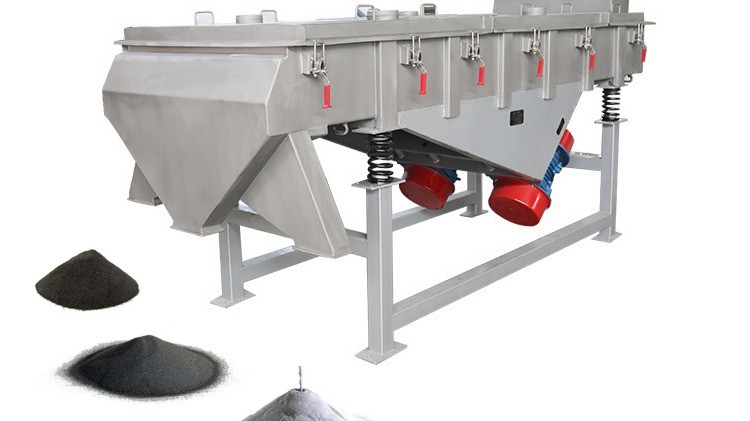Introduction
Fine material processing is a critical aspect of various industries, including pharmaceuticals, food processing, chemicals, and mining. The effectiveness of this process heavily relies on the equipment used for separation and classification. Among the most innovative advancements in this area are ultrasonic vibrating screens, which have revolutionized how fine materials are processed. This blog post will explore why ultrasonic vibrating screens are becoming the go-to solution for fine material processing, focusing on their advantages, working principles, applications, and future potential.
What Are Ultrasonic Vibrating Screens?
Ultrasonic vibrating screens are specialized screening equipment designed to separate and classify fine particles with high precision. Unlike traditional vibrating screens, which rely solely on mechanical vibrations, ultrasonic vibrating screens incorporate ultrasonic technology to enhance the sieving process. The addition of ultrasonic waves significantly improves the ability to screen fine materials, overcoming common challenges like clogging and blinding.
How Ultrasonic Vibrating Screens Work
The basic operation of an ultrasonic vibrating screen involves two key components: the vibrating screen itself and the ultrasonic generator.
- Vibrating Screen: The screen surface vibrates at a specific frequency, allowing materials to pass through the mesh openings. Traditional vibrating screens can struggle with fine materials, which tend to adhere to the screen surface.
- Ultrasonic Generator: This device produces high-frequency ultrasonic waves (typically between 20 kHz and 40 kHz) that are applied to the screen surface. The ultrasonic vibrations prevent material from sticking to the mesh, allowing for better flow and reducing the risk of blockages.
The combination of mechanical vibrations and ultrasonic waves leads to improved screening efficiency, particularly for fine powders and particles that are difficult to separate using conventional methods.
Advantages of Ultrasonic Vibrating Screens
1. Enhanced Screening Efficiency
Ultrasonic vibrating screens significantly increase the efficiency of material processing. The ultrasonic waves create a more fluid movement of particles across the screen surface, promoting better separation and reducing the likelihood of blinding. This enhanced efficiency translates to higher production rates and improved quality of the final product.
2. Effective for Fine and Sticky Materials
Fine and sticky materials often pose challenges in traditional screening processes, leading to clogging and reduced throughput. Ultrasonic technology overcomes these challenges by reducing the adhesion of particles to the screen. This capability is particularly beneficial in industries dealing with fine powders, such as pharmaceuticals and chemicals.
3. Improved Product Quality
The use of ultrasonic vibrating screens results in a more uniform particle size distribution. This consistency is essential in applications where the quality of the final product is critical. For example, in pharmaceuticals, achieving precise particle sizes can impact the efficacy and safety of medications.
4. Reduction in Labor Costs
Automating the screening process with ultrasonic technology reduces the need for manual intervention. This automation not only saves time but also minimizes labor costs, allowing operators to focus on other critical tasks within the production line.
5. Versatility in Applications
Ultrasonic vibrating screens are versatile and can be used in various industries, including:
- Pharmaceuticals: For separating and classifying active ingredients and excipients.
- Food Processing: In sifting flour, sugar, and spices, ensuring purity and quality.
- Chemicals: For classifying powders and separating contaminants.
- Mining: In separating fine minerals and ores.
Applications of Ultrasonic Vibrating Screens
1. Pharmaceutical Industry
In the pharmaceutical sector, the need for precise particle size distribution is paramount. Ultrasonic vibrating screens enable the effective separation of active pharmaceutical ingredients (APIs) and excipients, ensuring that medications meet strict regulatory standards. The ability to process fine powders without contamination enhances product quality and safety.
2. Food Processing Industry
The food processing industry requires strict adherence to hygiene and safety standards. Ultrasonic vibrating screens help eliminate contaminants and ensure that food products maintain their desired texture and flavor. For example, when processing spices, ultrasonic screens can efficiently separate fine particles while removing impurities.
3. Chemical Industry
In chemical manufacturing, consistent particle size is essential for product performance. Ultrasonic vibrating screens facilitate the separation of fine powders and ensure a high level of purity in chemical products. This capability is crucial in applications such as pigments, dyes, and specialty chemicals.
4. Mining and Mineral Processing
The mining industry relies on efficient separation processes to extract valuable minerals from ores. Ultrasonic vibrating screens enable the effective classification of fine minerals, improving overall recovery rates and enhancing the efficiency of mineral processing operations.
The Future Potential of Ultrasonic Vibrating Screens
As industries continue to seek more efficient and reliable methods for fine material processing, ultrasonic vibrating screens are poised for significant growth. Several trends and advancements indicate a promising future for this technology:
1. Integration of Advanced Technologies
The integration of technologies such as the Internet of Things (IoT) and artificial intelligence (AI) is expected to enhance the functionality of ultrasonic vibrating screens. IoT sensors can monitor performance in real-time, allowing for proactive maintenance and optimization of the screening process. AI algorithms can analyze data to make adjustments for improved efficiency and productivity.
2. Increasing Demand for Eco-Friendly Solutions
With the growing emphasis on sustainability, industries are looking for eco-friendly processing solutions. Ultrasonic vibrating screens offer an energy-efficient alternative to traditional screening methods, reducing waste and minimizing environmental impact.
3. Expansion into Emerging Markets
As industries in emerging markets continue to develop, the demand for advanced material processing technologies is expected to rise. Ultrasonic vibrating screens can provide these markets with efficient solutions for their fine material processing needs, leading to increased adoption.
Conclusion
Ultrasonic vibrating screens are revolutionizing fine material processing by offering enhanced efficiency, improved product quality, and versatility across various industries. Their ability to effectively handle fine and sticky materials makes them an indispensable tool in sectors such as pharmaceuticals, food processing, chemicals, and mining.
As technology continues to advance and industries prioritize efficiency and sustainability, ultrasonic vibrating screens are poised to play a significant role in the future of material processing. By investing in this innovative technology, companies can streamline their operations, reduce costs, and ensure the highest quality in their products.
In a world where precision and efficiency are paramount, ultrasonic vibrating screens are not just the future—they are the present solution for fine material processing challenges.



